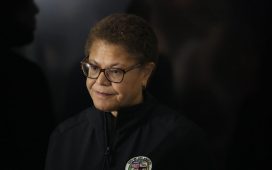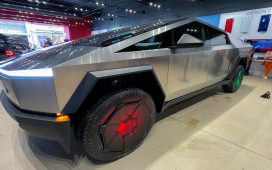General Motors Cruise test vehicles
Source: General Motors
Cruise, the subsidiary of General Motors developing self-driving vehicles and services, said Wednesday it is postponing a plan to launch an autonomous ride-share service by the end of 2019.
It is the latest indication automakers and tech firms are finding it tougher than expected to put self-driving cars on the roads for public use.
Cruise CEO Dan Ammann announced the delay in launching an autonomous ride-share program through a post on Medium. “Our first deployment needs to be done right and we will only deploy when we can demonstrate that we will have a net positive impact on safety on our roads,” he said. The company has tabbed San Francisco as the location for the service when it eventually starts.
Before that happens, Cruise will be put more test vehicles on the road in San Francisco to better understand and solve the challenges of navigating busy city streets. Right now, Cruise has a fleet of 180 specially designed all-electric GM cars, modified with lidar sensors, cameras and radar logging thousands of miles every day, all with a safety driver ready to take control of the car if a complex or dangerous situation arises.
Since late 2017, Ammann and General Motors have said they plan to have an autonomous ride-share service on the road by the end of 2019. That optimism is one reason why the Softbank Vision Fund, Honda and others have invested more than $7.25 billion into Cruise, pushing its valuation to $19 billion last May, according to company figures.
The appeal of robotaxis is the potential to generate large profits by eliminating the driver, the biggest cost facing Uber, Lyft and other ride-hailing companies. In previous briefings with reporters, Cruise has estimated the cost to operate an autonomous ride-share program in San Francisco could be as low as $1.50 per mile, 40% below the cost of similar services operated by a human driver.
While investors may be optimistic about the potential profits of robotaxis driving passengers around a city, those who track the industry are not surprised Cruise is tapping the brakes on its plans. “The closer you get to ground zero and putting an autonomous vehicle or vehicles on the road, the difference between where the technology is now and where it needs to be cannot be ignored,” said Mike Ramsey, automotive analyst for Gartner Research. “The right thing to do is to not put a product out on the road too soon.”
Late last year, Waymo, Alphabet’s autonomous vehicle division, launched its own commercial ride-share service in metropolitan Phoenix. Tesla CEO Elon Musk has promised to have “a million robotaxis” on the road by the end of 2020, capitalizing on Tesla’s autopilot technology.
“I feel very confident predicting autonomous robotaxis for Tesla next year,” Musk told analysts in May. He later admitted his timing for plans is sometimes wrong.
For Cruise, the focus now is expanding the number of miles its test fleet is driving.
“Having our cars running many more miles on the road will further accelerate our rate of learning and safety validation,” said Ammann. “It will also give us crucial operational learnings from running a larger scale fleet and a larger scale ride service, which we currently operate for our employees.”








